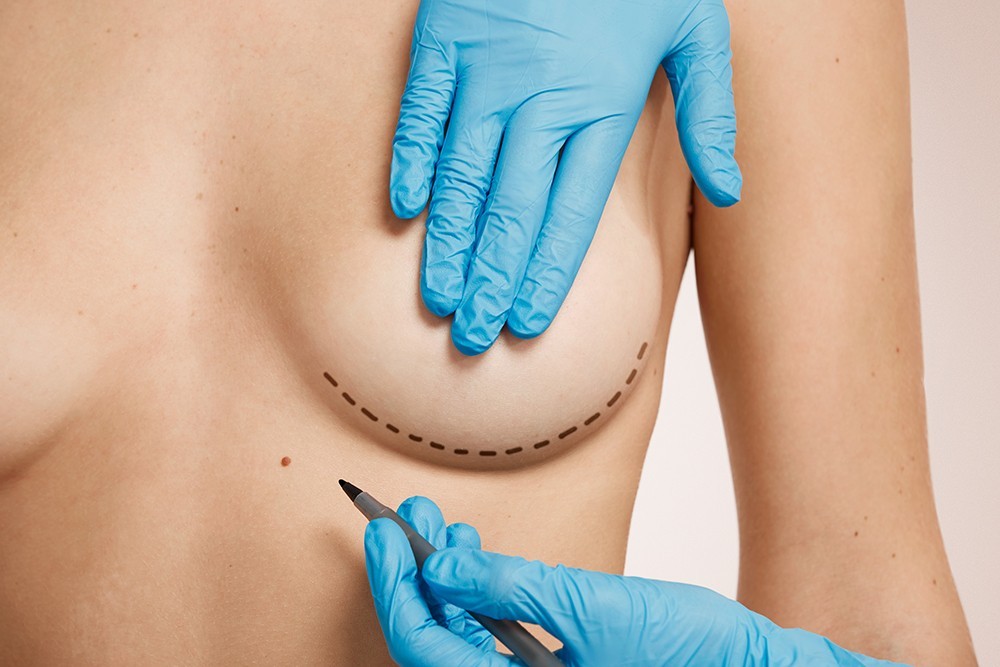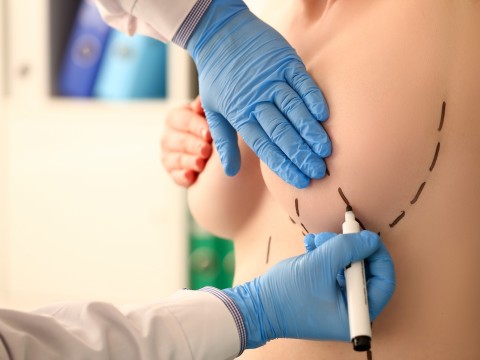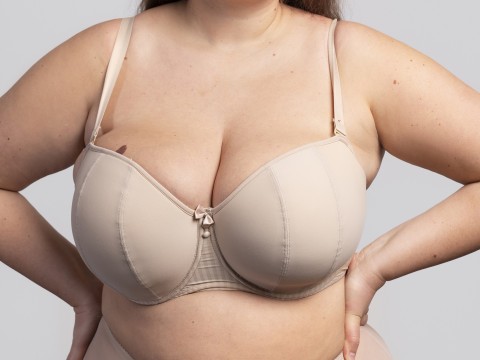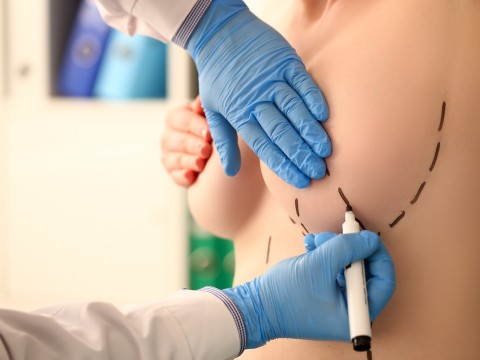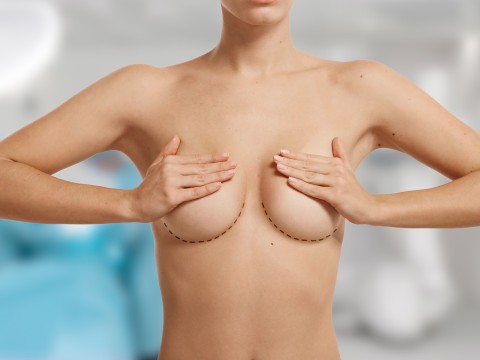Breast Augmentation Surgery: A Complete Guide to Boost Your Confidence
Breast augmentation is one of the most popular cosmetic surgeries in the world. This gives women a chance to increase the size, shape, and general appearance of their breasts. For cosmetic purposes, after a breast cancer mastectomy, or after drastic weight loss, this kind of surgery will drastically affect a woman's confidence and self-esteem. This article examines various aspects of the breast augmentation procedure, its benefits, recovery, and some possible risks.
What is Breast Augmentation?
Breast augmentation, also referred to as breast enhancement or breast implants, is a surgical procedure intended to enlarge or reshape the breasts with the help of implants. These implants are usually filled with either saline, which is sterile saltwater, or silicone gel. The surgery aims at improving the volume, shape, and symmetry of the breasts to make them look more balanced and youthful.
Breast augmentation is not only applicable to women who want to increase the size of their breasts but also to those who would want to restore volume lost due to pregnancy, aging, or significant weight loss. It can also be performed for women who have one breast significantly smaller than the other, as a way to achieve a more symmetrical look.
Types of Breast Implants
Saline and silicone gel are the most common materials used in making breast implants; each of these has different characteristics. The type of implant chosen would depend upon the individual's preference, body type, and aesthetic outcome desired. Let's look at each type in detail:
Saline Implants: These implants are filled with sterile saltwater and are inserted empty, with the surgeon filling them to the desired size once in place. Saline implants are FDA-approved for women age 18 and older. They are slightly firmer than silicone implants, and in the event of a rupture, the body absorbs the saline solution without causing harm.
Silicone Gel Implants: Silicone implants are prefilled with a thick, silicone-based gel that closely resembles natural breast tissue in appearance and texture. They're FDA-approved for women over age 22. Due to the more natural-feeling consistency of silicone when compared to saline, lots of women like them. Rupture problems may be an issue here also-as it might not be discovered right away, so again regular checkups will be key:.
Both silicone and saline implants come in a variety of shapes, sizes, and textures that allow your surgeon to tailor the procedure to your body and goals.
Who Is a Good Candidate for Breast Augmentation?
Breast augmentation surgery is generally suitable for women who are in good overall health and have realistic expectations about the outcomes of the procedure. Ideal candidates for breast augmentation include:
Small or Uneven Breasts: Women who are unhappy with the size or symmetry of their breasts are usually good candidates for breast augmentation. This could include women whose breasts have never fully developed or those who experience significant breast asymmetry.
Post-Pregnancy or Weight Loss: Many women, after pregnancy or extreme weight loss, experience a decrease in breast volume and sagging. Breast augmentation helps restore the lost volume for a fuller, more youthful appearance.
Desire for Increased Breast Size: Some women may wish to increase their breast size for aesthetic reasons, aiming for a fuller, more proportionate figure. This is achievable with the help of breast augmentation.
This, therefore, may be said in place of an introduction: Besides breast reconstruction after mastectomies due to serious forms of cancers or other types of severe medical conditions. However, all these procedures restore lost self-esteem and the visual appeal of a natural, fully shaped breast.
The Procedure of Breast Augmentation
Breast augmentation surgery is usually performed under general anesthesia and takes about 1 to 2 hours, depending on the complexity of the procedure and whether it is being done in conjunction with other surgeries (such as breast lift). The steps of the procedure include:
Incision: The surgeon will make an incision in one of several possible locations:
Inframammary: Underneath the breast, in the natural fold. This is the most common and preferred incision site due to its minimal visibility.
Periareolar: Around the nipple-areolar complex. This incision is discreet but may be less ideal for those with darker areolas or those who plan to breastfeed.
Transaxillary: In the armpit. This option avoids any breast tissue scarring but requires specialized surgical techniques.
Transumbilical: Through the belly button. This is less common but can be done for saline implants.
Implant Placement: The surgeon will make a pocket either underneath the breast tissue, called subglandular, or underneath the chest muscle, called submuscular, in which to place the implant. The type of placement will depend on body type, skin elasticity, and the look the patient desires.
Closure of the Incisions: Once the implants are in position, the incisions are meticulously closed with sutures, followed by dressing. The surgeon may also insert drains to minimize the accumulation of fluid in the early stages of recovery.
Benefits of Breast Augmentation
Breast augmentation comes along with several physical and psychological advantages. Among these are:
The obvious ones are the increase in breast size, which improves body proportion and enhances self-confidence because of the better-looking breasts. Symmetry: Many females who have asymmetrical size go for augmentation to be able to have balanced and symmetrically shaped breasts that make their bodily outlook more appealing.
Restoring Volume after Pregnancy or Weight Loss: Breast augmentation may help a woman regain her volume that has been lost from pregnancy, breastfeeding, or dramatic weight loss and will help her to be more confident about her appearance.
Clothing Fitting Better: Many women have reported that after the surgery, they feel more confident when wearing form-fitting or low-cut clothing since the overall silhouette of their body is accentuated.
Breast Reconstruction: In cases where a woman has to undergo a mastectomy due to cancer or any other ailment, breast augmentation helps in the reconstruction of the shape of the breast and thus aids in emotional recovery.
Recovery and Aftercare
Recovery from breast augmentation surgery usually takes some weeks. Here's what to expect during the recovery process:
Postoperative Care: The patients will be provided with a post-surgical bra to wear for support and to reduce swelling. It is important to follow the instructions provided by the surgeon regarding incision care, drain removal, and resumption of activities.
Pain and Swelling: Some discomfort, swelling, and bruising are expected for the first few days following surgery. Pain medication is prescribed to control discomfort. Swelling usually resolves after 2 to 3 weeks, but it may take several months for the breasts to settle into their final position.
Limited Activity: Patients are advised to avoid strenuous activity, heavy lifting, or exercises that involve the chest muscles for 4 to 6 weeks. Most individuals can return to work within a week but are advised to avoid high-intensity activities until cleared by the surgeon.
Follow-Up Appointments: Scheduling regular follow-up visits provides the surgeon with the opportunity to monitor the implants and how well they are healing. The surgeon will examine the areas around the incisions, and discuss the progress of their healing process, among other concerns.
Risks and Possible Complications
Every surgery carries a number of possible risks. While rare, complications with breast augmentation may include :
Infection: All surgical procedures run the risk of infection. Infection can be minimized by following the right aftercare instructions.
Rupture or Leakage of the Implant: These may occur due to trauma to the breast. In most cases, the implant has to be replaced.
Capsular Contracture: The body forms a natural capsule of scar tissue around the implant. Sometimes, this capsule tightens and can cause the breast to feel firm or become misshapen. Treatment options include massage, medications, or additional surgery.
Changes in Sensation: Some women may experience changes in nipple or breast sensation after surgery. While this is often temporary, in rare cases, it can be permanent.
Implant Rippling or Wrinkling: Visible rippling or wrinkling of the implant under the skin may be observed in some women, especially in the case of saline implants.
Is Breast Augmentation Right for You?
Breast augmentation is a very good option for women who want fuller, more youthful breasts or would like to achieve better symmetry of the breasts. It is important to discuss your goals, medical history, and the potential benefits and risks of surgery with a board-certified plastic surgeon.
Before proceeding with breast augmentation, ensure you have a clear understanding of the procedure, recovery, and long-term maintenance, including the potential need for implant replacement over time. With the right surgeon and clear expectations, breast augmentation can be a life-changing procedure that enhances both your appearance and your self-confidence.
Conclusion
Breast augmentation is a procedure that can transform the size, shape, and symmetry of one's breasts into a more desirable figure. It offers long-term benefits, whether aesthetic or for reconstruction after breast cancer. If you're considering breast augmentation, it's important that you consult a skilled and experienced surgeon to determine the best approach for your body and goals.
- Abdominal liposuction
- Arm Lift (Brachioplasty)
- Back Liposuction
- Blepharoplasty (Eyelid Surgery)
- Brazilian Butt Lift (BBL)
- Breast Augmentation with Tear Drop Implants
- Breast Correction
- Breast Implant Removal
- Breast Implants With Breast Lift
- Breast Lift
- Breast Reconstruction
- Breast Reduction
- Brow Lift
- Buccal Fat Extraction
- Butt Implants
- Buttock lift
- Buttock Reduction
- Cheekbone Reduction
- Chin Implant
- Chin Liposuction
- Health Insurance
-
Accommodation
- Online Healthy Life Assistant 9/5
- Post - Experience Follow Up 6 Month
-
Extra Privileges

- Health Insurance
-
Accommodation
- Online Healthy Life Assistant 24/7
- Post - Experience Follow Up 1 Year
- Pre-Treatment Doctor Consultation
-
Extra Privileges

 Private
Private
- Health Insurance
- Healthy Life Butler
- Post - Experience Follow Up 2 Year
- World-Famous Doctor Consultation
-
Extra Privileges
No suitable hotel found for the relevant dates!
* Price varies depending on extra and upgrade selections.
Breast augmentation, also known as augmentation mammoplasty or a "boob job," is a common surgical procedure to enlarge or bring symmetry to the breasts. It can be performed to increase natural size, correct sagging and volume loss, or reconstruct breasts for breast cancer patients who have undergone mastectomy surgery.
Individuals eligible for this surgical procedure are those dissatisfied with their current breast size and have completed their breast development. This intervention is particularly beneficial for individuals with breast asymmetry, ensuring both breasts achieve a harmonious balance.
The methodology for breast augmentation varies depending on the preferred technique. Achieving the desired breast enlargement involves attaching a breast prosthesis, with the procedure typically performed under general anesthesia. There exist two fundamental types of breast implants: Saline and silicone gel. Saline-filled implants consist of silicone shells filled with sterile salt water. Some come pre-filled, while others can be filled post-placement, allowing for smaller incisions and scars. Silicone gel-filled implants, on the other hand, comprise silicone shells filled with a plastic gel. As these implants are pre-filled, they do not permit size adjustments based on body proportions. The choice of the best implant depends on the specific needs of each patient, taking into consideration the individual's breast and rib cage structure. Opting for a realistic prosthesis is crucial at this stage.
Primarily, these silicones undergo rigorous testing and are manufactured with utmost reliability. Therefore, we can say that there is no risk.
The recovery process following breast enlargement surgeries varies from person to person. Discomfort and postoperative issues generally subside within a few days. However, a complete recovery necessitates a period of rest spanning one to two weeks, allowing the patient to fully resume normal activities within two to three weeks.
Calculating the weight of breast implants requires knowledge of the desired volume. The weight of these implants can range from 120 to 400 grams, influenced by various factors, with the potential for greater weight depending on the chosen size. A qualified surgeon will lead you on this decision.
The majority of FDA-approved silicone and saline implants are designed to last 10-15 years. Replacement is unnecessary if no issues arise within this timeframe.

